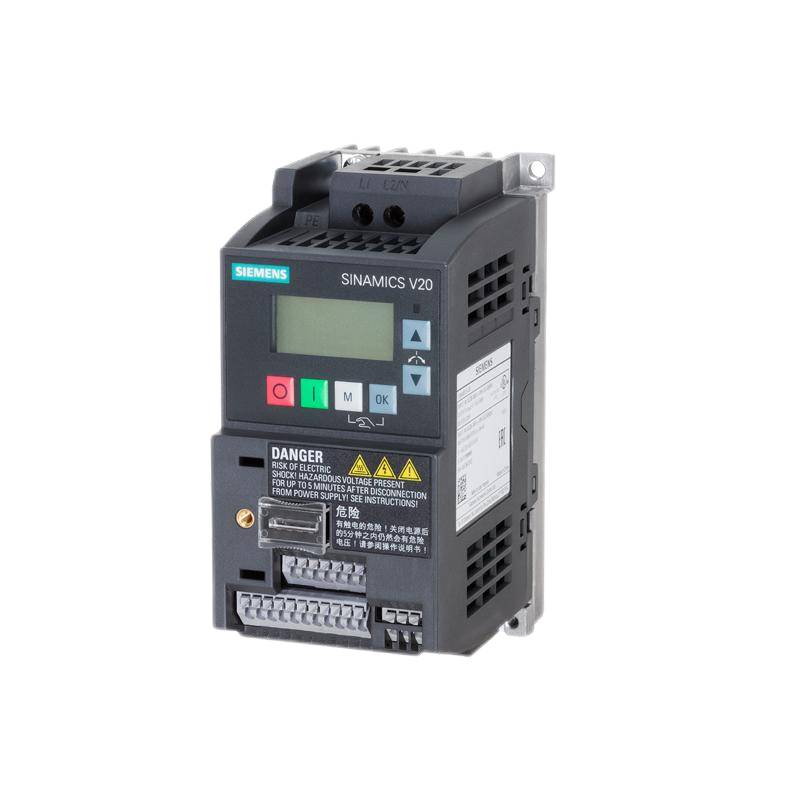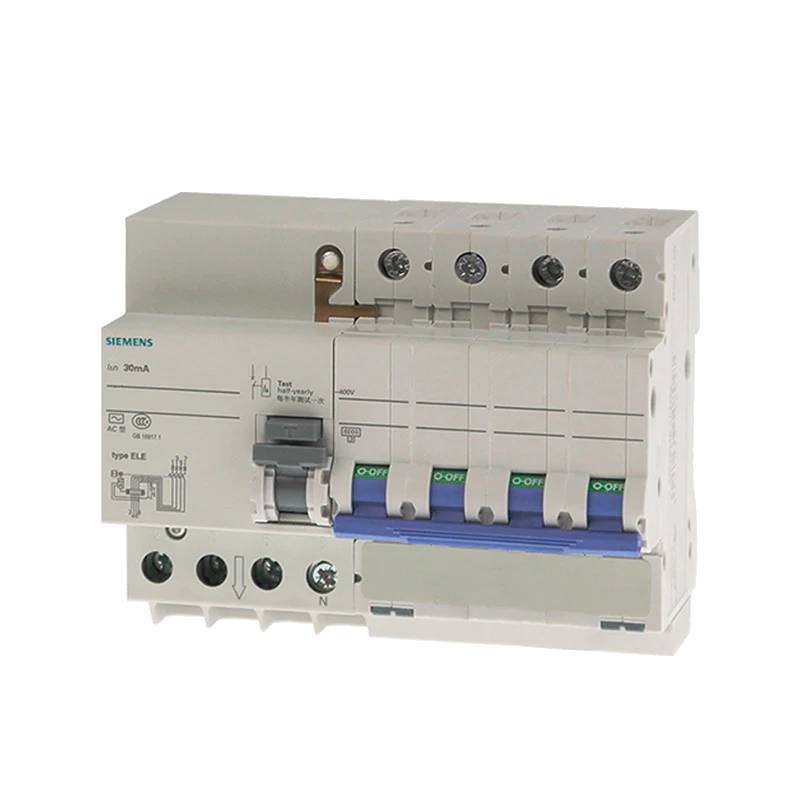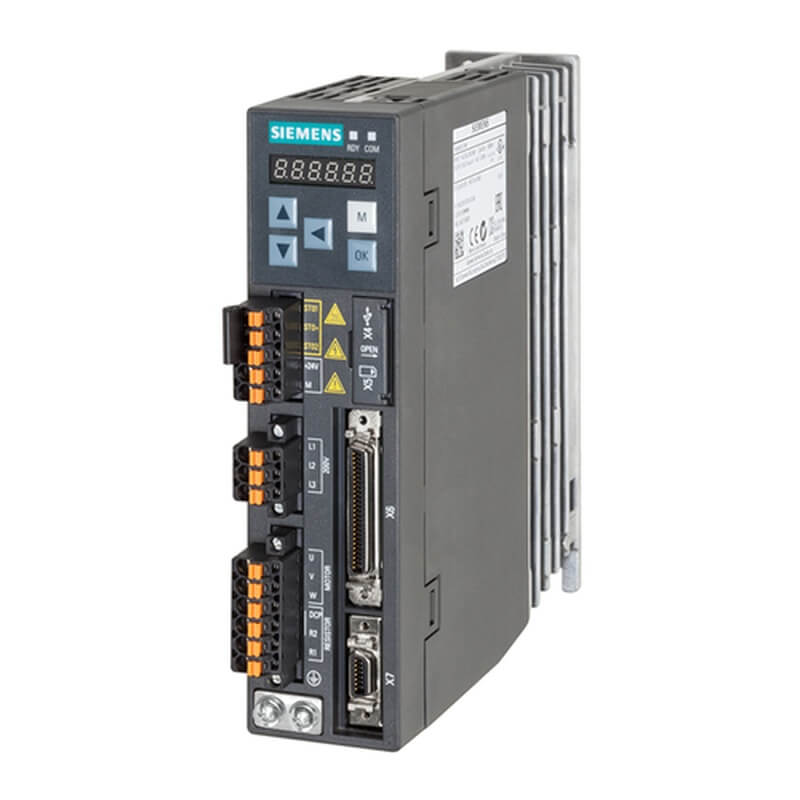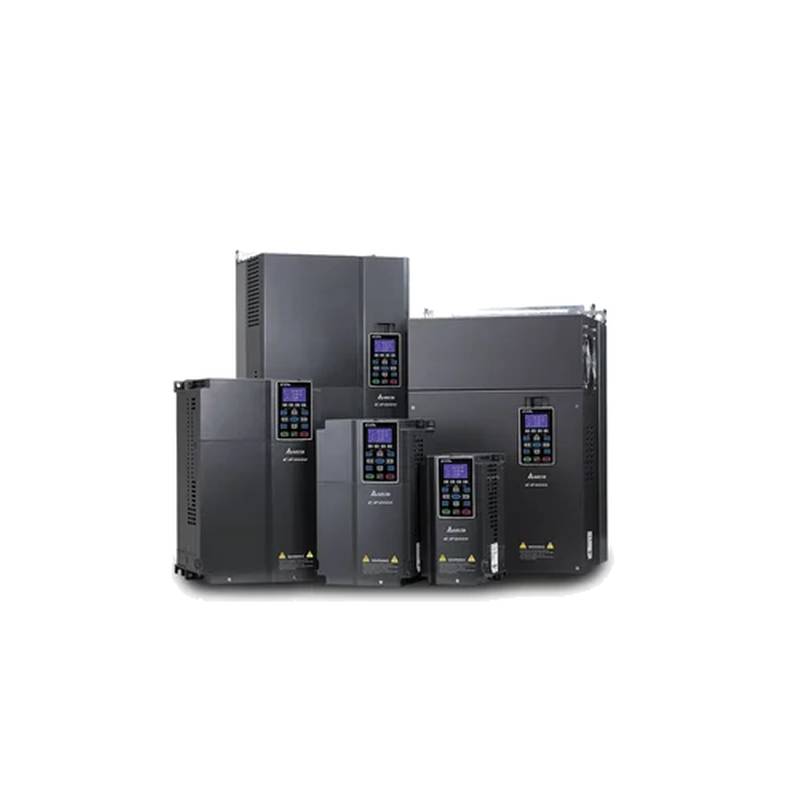
The Siemens 6SL3210-5BB17-5BV1 V20 brake series drive is engineered for demanding applications, particularly those involving high inertia loads. This compact Sinamics V20 drive offers robust performance with a 0.75kW power rating and a 4.2A output current, ensuring efficient control and braking capabilities. Its integrated brake control function is crucial for safely stopping and holding loads that resist rapid deceleration, preventing dangerous coasting or uncontrolled movement. The V20 platform is renowned for its ease of use, energy efficiency, and reliability, making the 6SL3210-5BB17-5BV1 an excellent choice for a wide range of industrial automation tasks requiring precise motion control and enhanced safety.
Siemens 6SL3210-5BB17-5BV1 V20 Product Specifications
| Parameter | Value |
| :---------------------- | :------------------------------------- |
| Product Series | Sinamics V20 |
| Part Number | 6SL3210-5BB17-5BV1 |
| Brake Series | Integrated Brake Control |
| Rated Output Power | 0.75 kW (1 HP) |
| Rated Output Current | 4.2 A |
| Input Voltage | 380-480 V, 3 Phase |
| Output Voltage | 380-480 V, 3 Phase |
| Frequency Range | 0-600 Hz |
| Protection Class | IP20 |
| Dimensions (H x W x D) | 232 x 140 x 165 mm |
| Weight | Approx. 3.5 kg |
| Ambient Temperature | -10 °C to +50 °C (without derating) |
Core Features & Market Positioning
The Siemens 6SL3210-5BB17-5BV1 distinguishes itself through its specialized high inertia load handling capabilities, a critical differentiator in applications like cranes, hoists, and large material handling systems. Unlike standard drives, its integrated brake control logic actively manages braking torque, ensuring smooth and safe deceleration, which significantly reduces mechanical stress and wear. This feature positions the V20 brake series as a premium solution where load inertia is a primary concern, offering superior safety and operational efficiency. Furthermore, the Sinamics V20 platform's inherent energy-saving features, such as bypass operation and automatic flux optimization, contribute to reduced operating costs, appealing to cost-conscious yet performance-demanding industrial sectors.
Key Application Scenarios
This Siemens drive is ideally suited for applications demanding controlled stopping and holding of high inertia loads. This includes vertical axis movements in elevator systems, precise positioning of robotic arms in manufacturing, and the operation of conveyors and automated storage systems where sudden stops could be hazardous or damaging. Industrial sectors such as logistics, automotive manufacturing, and process industries frequently leverage drives like the 6SL3210-5BB17-5BV1 for their ability to manage the kinetic energy of large, rotating masses. Its robust design and integrated safety features also make it suitable for environments requiring reliable performance under continuous operation.
Practical System Integration Guidance
Integrating the 6SL3210-5BB17-5BV1 into existing systems is streamlined due to the Sinamics V20's user-friendly interface and clear terminal layout. For optimal performance with high inertia loads, proper motor selection is paramount; ensure the motor's torque and speed characteristics align with the drive's capabilities and the application's demands. Wiring should adhere strictly to the provided manual, paying close attention to grounding and shielded cable usage to prevent electromagnetic interference. Commissioning typically involves parameterizing basic settings like motor nameplate data, ramp times, and the specific brake control parameters to match the load inertia. Utilizing Siemens' starter or comfort panels can simplify initial setup and fine-tuning of operating modes.
Operation and Risk Mitigation
Safe operation of the Siemens 6SL3210-5BB17-5BV1 drive hinges on understanding its braking functions and implementing appropriate safety protocols. Overload and over-temperature protection are standard, but for high inertia loads, monitoring motor and drive temperatures during extended braking cycles is advised. The integrated brake control is designed to prevent overshooting and uncontrolled coasting; however, always ensure that external safety measures, such as mechanical brakes or safety interlocks, are in place as a redundant layer of protection. Fault code analysis, readily available in the Sinamics V20 operating instructions, is crucial for rapid troubleshooting. Common fault codes relate to overcurrent, overvoltage, or braking resistor issues, often requiring a review of application parameters or the braking resistor's suitability.
Scalability & Long-Term Value
The Sinamics V20 platform, including the 6SL3210-5BB17-5BV1, offers notable scalability and long-term value. Its compatibility with standard fieldbus systems allows for seamless integration into wider automation architectures, enabling centralized control and monitoring. For future expansions or upgrades, the V20's architecture supports straightforward replacement or addition of drives within a network. Siemens' commitment to digital solutions means these drives can be integrated into IIoT platforms, facilitating predictive maintenance, performance analysis, and remote diagnostics, thereby maximizing uptime and operational efficiency throughout the product lifecycle. This foresight in design ensures continued relevance in evolving industrial landscapes.
Frequently Asked Questions
What is the primary function of the brake series on the Siemens 6SL3210-5BB17-5BV1?
The brake series feature actively manages braking torque for controlled stops. It's crucial for safely halting loads with significant rotational energy. This prevents dangerous coasting after power is removed.
This function ensures precise and rapid deceleration, essential for high inertia applications. It significantly reduces wear on mechanical components by preventing abrupt stops. The drive controls the braking force dynamically based on load conditions.
Ultimately, this integrated brake control enhances operational safety and system reliability. It is a key component for applications like cranes, hoists, and conveyors. The drive provides a secure holding torque when stationary.
How does the 0.75kW power rating and 4.2A current output benefit high inertia load applications?
The 0.75kW rating provides ample power for typical industrial machinery. It ensures the drive can handle the continuous operational demands of many systems. This power level is suitable for a wide range of motor sizes within its class.
The 4.2A output current is optimized for the specific motor types used with this drive. It ensures sufficient current delivery for acceleration and maintaining speed. This current rating is critical for the drive's torque generation capability.
Together, these parameters allow the 6SL3210-5BB17-5BV1 to effectively manage the starting and stopping of high inertia loads. It balances performance with energy efficiency for this application niche. The drive's rating is key to its specialized function.
What types of industrial machinery are best suited for the Siemens 6SL3210-5BB17-5BV1 V20 drive?
This drive excels in machinery requiring precise stopping and holding. Examples include elevators, cranes, and hoists with heavy vertical loads. Automated guided vehicles also benefit from controlled movement.
It is highly effective for material handling systems with large rotating components. Think of large conveyor belts or automated storage and retrieval systems. Printing presses and packaging machines also fit this profile.
Any application where a motor needs to be brought to a safe, rapid stop is a prime candidate. High inertia means more energy to dissipate, which this drive handles well. It ensures operational safety and prevents damage.
Can the 6SL3210-5BB17-5BV1 be integrated into existing automation systems?
Yes, the Sinamics V20 platform supports common industrial communication protocols. This allows for straightforward integration into SCADA or PLC-based systems. Fieldbus modules can be added for advanced networking needs.
The drive features standard terminal connections for basic control signals. This simplifies wiring and connection to existing control panels or switchgear. Its modular design aids in system expansion.
Siemens provides extensive documentation and software tools. These resources facilitate integration and parameter setting with various automation platforms. Compatibility with other Siemens products is generally excellent.
What are the main advantages of the integrated brake control in this V20 drive?
The primary advantage is enhanced safety for high inertia loads. It ensures the motor and load are stopped reliably and quickly. This prevents uncontrolled coasting and potential hazards.
It simplifies system design by reducing the need for external braking components. This lowers installation costs and complexity. The integrated solution is optimized for performance and reliability.
The brake control actively manages braking torque, providing smoother deceleration. This protects mechanical components from shock loads. It also improves positioning accuracy in dynamic applications.
What basic installation considerations are important for this drive?
Ensure proper ventilation around the drive to prevent overheating. The IP20 rating means it must be installed in a clean, dry control cabinet. Avoid direct sunlight or excessively dusty environments.
Follow the wiring guidelines precisely, especially for power and motor connections. Use appropriately sized conductors and ensure secure connections. Proper grounding is critical for safety and EMC performance.
Mount the drive vertically on a flat, stable surface. Allow adequate space for cooling and access to terminals and controls. Refer to the manual for specific mounting orientation requirements.
What does the 4.2A rating signify in terms of motor compatibility?
The 4.2A rating indicates the maximum continuous output current. It means the drive can safely power motors rated up to this current. Typically, this corresponds to motors around 0.75kW or 1 HP.
This current rating is crucial for the drive's torque delivery capability. It defines the motor's ability to accelerate and maintain speed under load. Ensure the selected motor's full load amperage does not exceed 4.2A.
For high inertia loads, the drive must also handle peak currents during acceleration and braking. The 4.2A rating is specific to the drive's design for these conditions. It's essential for matching the drive to the motor.
How can I access and set the parameters for the brake control function?
Parameter access is typically done via the drive's keypad and display, or through Siemens' TIA Portal software. The specific parameters for brake control will be clearly labeled within the parameter menu. Consult the product manual for exact parameter numbers.
Setting these parameters involves defining the conditions under which the brake engages and disengages. This includes thresholds for speed and current. You'll also configure braking torque levels and ramp-down behavior.
Correctly setting brake control parameters is vital for safety and performance. Incorrect settings can lead to premature brake wear or insufficient braking force. Always perform a test run to verify functionality after configuration.
What is the typical input voltage range for the 6SL3210-5BB17-5BV1?
The drive operates on a three-phase AC power supply. Its specified input voltage range is 380-480 Volts. This is a common industrial voltage level in many regions.
It is important to ensure your power source is within this tolerance. Operating outside this range can lead to faults or damage to the drive. Always verify your supply voltage before connecting the drive.
This voltage range makes the drive suitable for use in a wide array of industrial facilities worldwide. It simplifies power integration in different electrical environments. The drive is designed for robustness within these parameters.
What kind of troubleshooting steps should I take if I encounter a fault code related to braking?
First, consult the Sinamics V20 operating manual for the specific fault code meaning. Common braking faults relate to brake resistor issues or excessive braking torque demands. Check if the brake resistor is correctly sized and connected.
Verify that the motor and load inertia are within the drive's specified limits. If the load inertia is too high, the drive may not be able to brake effectively. You might need to adjust ramp-down parameters or consider a larger drive.
Inspect mechanical braking systems for wear or binding. Ensure the brake control parameters are correctly configured for your application. Sometimes, an external brake contactor may require inspection for proper operation.
























